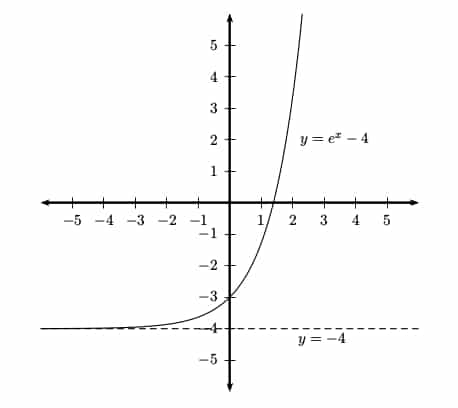Answer
Work Step by Step
Evaluate: $$displaystyle lim_{xto0}, frac x {e^{10x} - 1}$$
Step 1May 29, 2018 These will all be very useful properties to recall at times as we move throughout this course (and later Calculus courses for that matter). There is a very important exponential function that arises naturally in many places. This function is called the natural exponential function. However, for most people, this is simply the exponential. The second thing is here’s an opportunity to use the constant multiple rule. So when I take the derivative, I’m differentiating 5 times 2 to the x. And 2 to the x is an exponential function, but 5 is just a constant. By the constant multiple rule, I can pull that out. And then I’m left with this derivative of a simple exponential function. Christian Parkinson GRE Prep: Calculus I Practice Problem Solutions 3 so fis constant. Let f(x) = x2+sin(x) for x0. The temptation here is to use the power rule or the exponential rule but in the. The function (f(x)=e^x ) is the only exponential function (b^x ) with tangent line at (x=0 ) that has a slope of 1. As we see later in the text, having this property makes the natural exponential function the most simple exponential function to use in many instances. Math AP®︎/College Calculus AB Limits and continuity Determining limits using algebraic properties of limits: limit properties Limits of composite functions AP.CALC: LIM‑1 (EU), LIM‑1.D (LO), LIM‑1.D.1 (EK), LIM‑1.D.2 (EK).
1.4 Limits Of Exponential Functions Ap Calculus 14th Edition
Multiply by $$frac{10}{10}$$
$$ begin{align*} displaystylelim_{xto0},frac x {e^{10x} - 1} % & = displaystylelim_{xto0}left(% frac{blue{10}}{blue{10}}cdot frac x {e^{10x} - 1} right)[6pt] % & = displaystylelim_{xto0}left(% frac{1}{blue{10}}cdot frac{blue{10}x}{e^{10x} - 1} right)[6pt] % & = frac{1}{blue{10}}cdot lim_{xto0},frac{blue{10}x}{e^{10x} - 1} end{align*} $$
Step 2
Rewrite the function as its reciprocal raised to the $$-1$$ power.
$$ frac{1}{10}cdot displaystylelim_{xto0},frac{10x}{e^{10x} - 1} % = frac{1}{10}cdot displaystylelim_{xto0}left(% frac{e^{10x} - 1}{10x} right)^{-1} $$
Step 31.4 Limits Of Exponential Functions Ap Calculus Algebra

Pass the limit inside the exponent and evaluate (see the page on Limit Laws).
$$ frac{1}{10}cdot displaystylelim_{xto0}left(% blue{frac{e^{10x} - 1}{10x}} right)^{-1} % = frac{1}{10}left(% blue{displaystylelim_{xto0},frac{e^{10x} - 1}{10x}} right)^{-1} % = frac 1 {10} (blue 1)^{-1} % = frac 1 {10} $$
Answer1.4 Limits Of Exponential Functionsap Calculus Calculator

1.4 Limits Of Exponential Functions Ap Calculus Frq
$$ displaystyle lim_{xto0}, frac x {e^{10x} - 1} = frac 1 {10} $$
